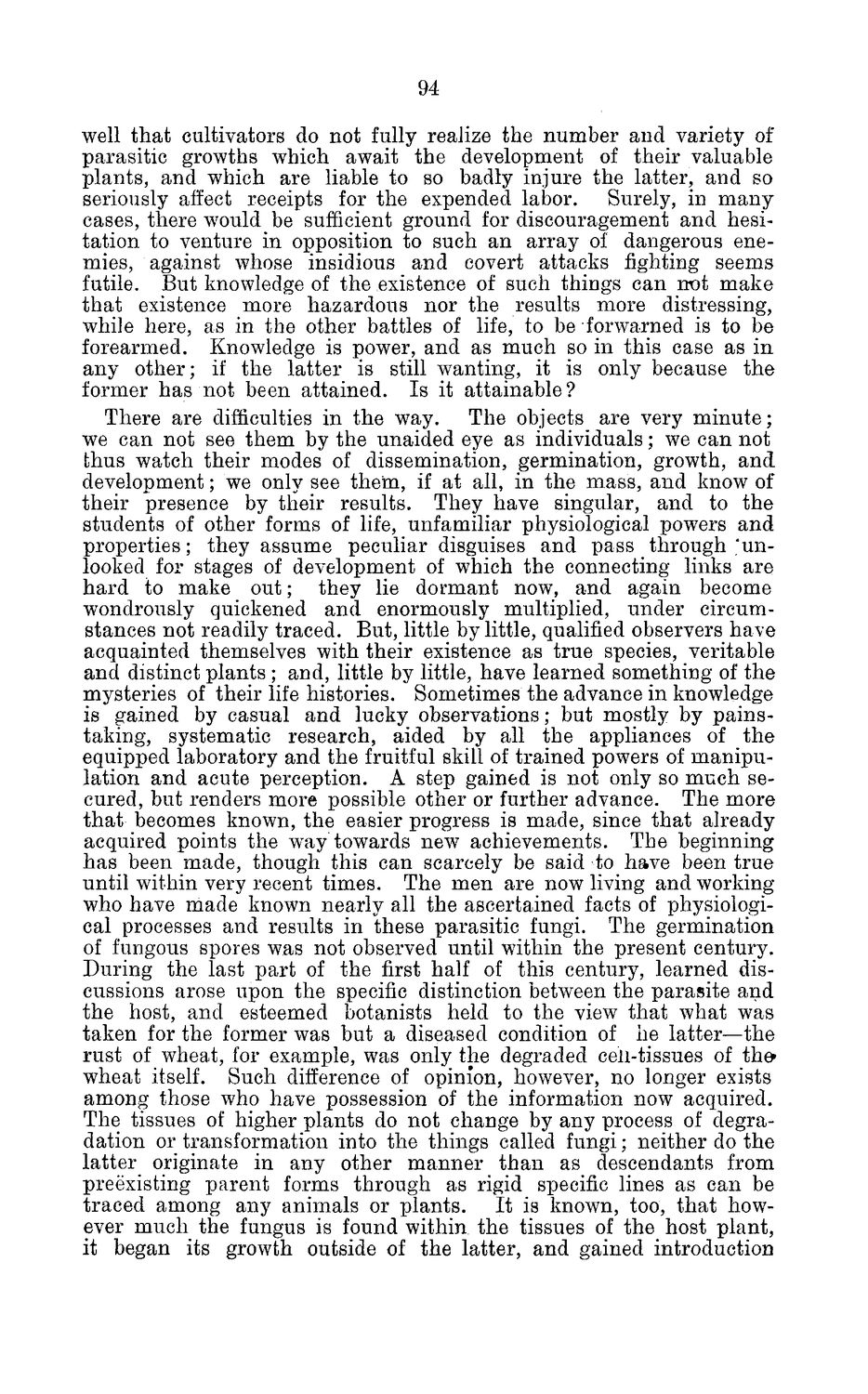| |
| |
Caption: Board of Trustees Minutes - 1884
This is a reduced-resolution page image for fast online browsing.

EXTRACTED TEXT FROM PAGE:
94 well that cultivators do not fully realize the number and variety of parasitic growths which await the development of their valuable plants, and which are liable to so badly injure the latter, and so seriously affect receipts for the expended labor. Surely, in many cases, there would be sufficient ground for discouragement and hesitation to venture in opposition to such an array of dangerous enemies, against whose insidious and covert attacks fighting seems futile. But knowledge of the existence of such things can nt)t make that existence more hazardous nor the results more distressing, while here, as in the other battles of life, to be forwarned is to be forearmed. Knowledge is power, and as much so in this case as in any other; if the latter is still wanting, it is only because the former has not been attained. Is it attainable? There are difficulties in the way. The objects are very minute; we can not see them by the unaided eye as individuals; we can not thus watch their modes of dissemination, germination, growth, and development; we only see them, if at all, in the mass, and know of their presence by their results. They have singular, and to the students of other forms of life, unfamiliar physiological powers and properties; they assume peculiar disguises and pass through 'unloosed for stages of development of which the connecting links are hard to make out; they lie dormant now, and again become wondrously quickened and enormously multiplied, under circumstances not readily traced. But, little by little, qualified observers have acquainted themselves with their existence as true species, veritable and distinct plants ; and, little by little, have learned something of the mysteries of their life histories. Sometimes the advance in knowledge is gained by casual and lucky observations; but mostly by painstaking, systematic research, aided by all the appliances of the equipped laboratory and the fruitful skill of trained powers of manipulation and acute perception. A step gained is not only so much secured, but renders more possible other or further advance. The more that becomes known, the easier progress is made, since that already acquired points the wTay towards new achievements. The beginning has been made, though this can scarcely be said to have been true until within very recent times. The men are now living and working who have made known nearly all the ascertained facts of physiological processes and results in these parasitic fungi. The germination of fungous spores was not observed until within the present century. During the last part of the first half of this century, learned discussions arose upon the specific distinction between the parasite and the host, and esteemed botanists held to the view that what was taken for the former was but a diseased condition of he latter—the rust of wheat, for example, was only the degraded cell-tissues of the* wheat itself. Such difference of opinion, however, no longer exists among those who have possession of the information now acquired. The tissues of higher plants do not change by any process of degradation or transformation into the things called fungi; neither do the latter originate in any other manner than as descendants from preexisting parent forms through as rigid specific lines as can be traced among any animals or plants. It is known, too, that however much the fungus is found within the tissues of the host plant, it began its growth outside of the latter, and gained introduction
| |